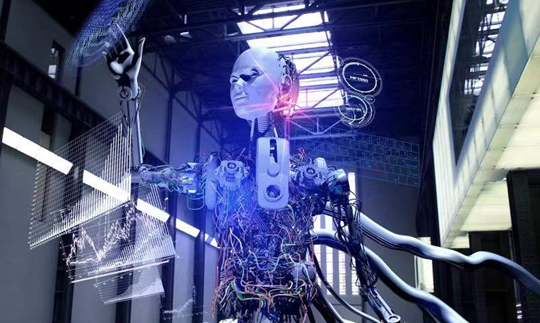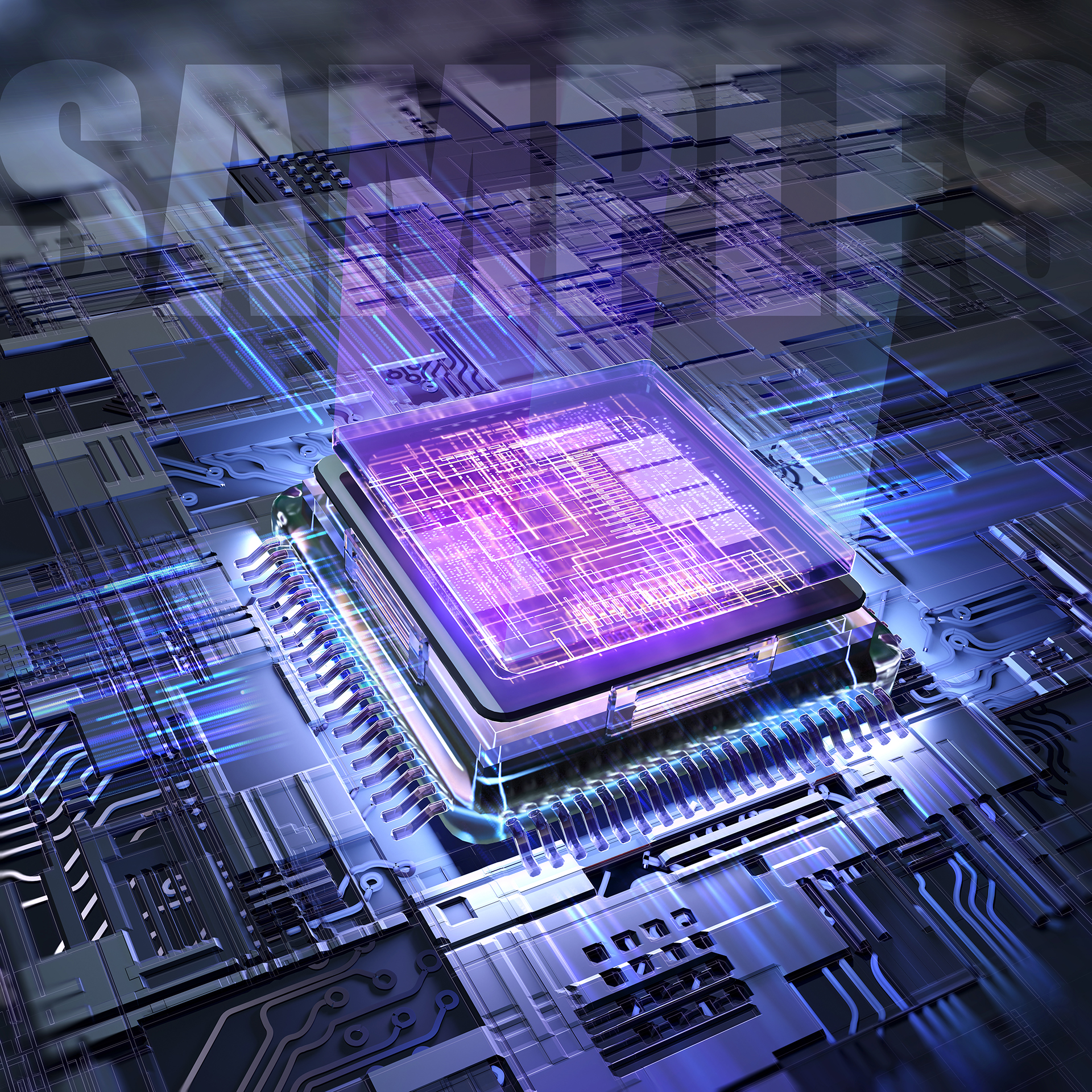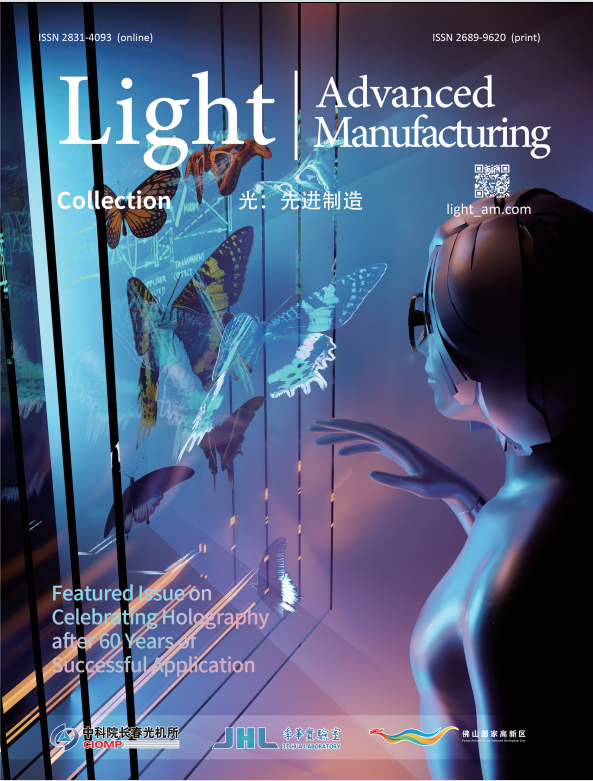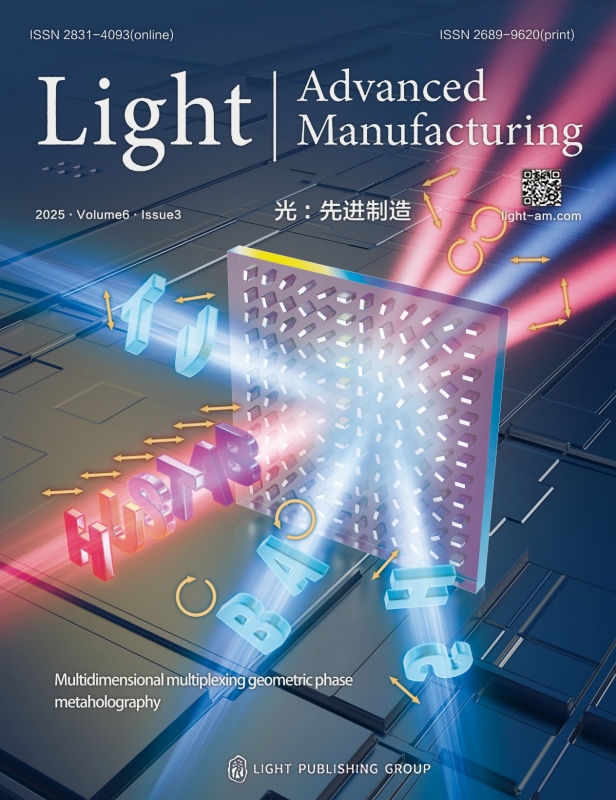Special Issues
Extreme Manufacturing refers to the fabrication of structures and devices at the two extremes of the manufacturing scale: from a nanometer to a meter. Light sources, such as lasers, have emerged as key tools at the forefront of this field, enabling the possibility of ultrahigh-precision and high speed manufacturing. Light-based techniques contain additive and subtractive manufacturing, facilitating the creation of ultra-high-resolution structures and high-performance devices. Recent advances in light-based additive and subtractive manufacturing have further expanded the capabilities of Extreme Manufacturing, enabling ultra-high resolution rapid prototyping and serial fabrication of complex designs, the fabrication of intricate geometries, and the development of novel materials with tailored properties. The emerging progress made in Extreme Manufacturing thus paves the way for the generation of cutting-edge applications across a wide range of fields, including photonics, optics, mechanics, sensing, imaging, energy conversion, tissue engineering, regenerative medicine, and more.
Extreme Manufacturing refers to the fabrication of structures and devices at the two extremes of the manufacturing scale: from a nanometer to a meter. Light sources, such as lasers, have emerged as key tools at the forefront of this field, enabling the possibility of ultrahigh-precision and high speed manufacturing. Light-based techniques contain additive and subtractive manufacturing, facilitating the creation of ultra-high-resolution structures and high-performance devices. Recent advances in light-based additive and subtractive manufacturing have further expanded the capabilities of Extreme Manufacturing, enabling ultra-high resolution rapid prototyping and serial fabrication of complex designs, the fabrication of intricate geometries, and the development of novel materials with tailored properties. The emerging progress made in Extreme Manufacturing thus paves the way for the generation of cutting-edge applications across a wide range of fields, including photonics, optics, mechanics, sensing, imaging, energy conversion, tissue engineering, regenerative medicine, and more.
Metal halide perovskites stand at the nexus of materials innovation, nanoscale engineering, and real-world device integration. Their journey from laboratory curiosities to contenders for commercial photovoltaics, radiation detectors, and photocatalytic systems has been propelled not only by exceptional optoelectronic properties—but decisively, by how they are fabricated, structured, and interfaced. This Special Issue of Light: Advanced Manufacturing, titled “Perovskite Nanomaterials and Nanostructures Fabrication for Photonics and Optoelectronics”, showcases a new generation of research where synthesis, nanostructuring, and interfacial control converge to solve long-standing challenges: instability in operational environments, poor reproducibility, scalability bottlenecks, and performance ceilings.
show moreMetal halide perovskites stand at the nexus of materials innovation, nanoscale engineering, and real-world device integration. Their journey from laboratory curiosities to contenders for commercial photovoltaics, radiation detectors, and photocatalytic systems has been propelled not only by exceptional optoelectronic properties—but decisively, by how they are fabricated, structured, and interfaced. This Special Issue of Light: Advanced Manufacturing, titled “Perovskite Nanomaterials and Nanostructures Fabrication for Photonics and Optoelectronics”, showcases a new generation of research where synthesis, nanostructuring, and interfacial control converge to solve long-standing challenges: instability in operational environments, poor reproducibility, scalability bottlenecks, and performance ceilings.
show lessFor nearly 90 years, scientists have unraveled intramolecular motion and chemical bonds, sparked by E. Synge's 1928 breakthrough in optical resolution. Near-field optical microscopy, surpassing classical limits, enables Angstrom-level spatial resolution. With this special issue ‘Nanospectroscopy, nanooptics and nanofabrication’, we wish to highlight the rapid experimental and theoretical advances of this burgeoning interdisciplinary field, as well as to provide an account of its peculiar challenges and future prospects.
show moreFor nearly 90 years, scientists have unraveled intramolecular motion and chemical bonds, sparked by E. Synge's 1928 breakthrough in optical resolution. Near-field optical microscopy, surpassing classical limits, enables Angstrom-level spatial resolution. With this special issue ‘Nanospectroscopy, nanooptics and nanofabrication’, we wish to highlight the rapid experimental and theoretical advances of this burgeoning interdisciplinary field, as well as to provide an account of its peculiar challenges and future prospects.
show lessArtificial intelligence is developing dramatically in many fields including photonics and advanced manufacturing. Modern sensing, communication, network, automation and other latest technologies are converged in such applications facilitated by the artificial intelligence. Through the intelligent identification, human-computer/human-machine interaction technology, decision-making and execution technology, as well as cost-effective algorithms, people achieve the intelligence of the design, implementation and manufacturing processes in photonic-related systems. In the last 10 years, the theory of artificial intelligence has been vigorously developed and applied. Novel high-performance sensors have been developed rapidly. The traditional automatic control theory is moving towards the direction of intelligence and human-machine integration. The precision of mechanical design and manufacture is increasing. The effectiveness of novel functionalities is explored. These advances have made the theory of photonics related advanced manufacturing evolving and verified in practice, which has formed a huge impact in the fields of advanced instruments and equipment, smart factories, future optical networking and so on.
This special issue aims to discuss the cutting-edge advances in the field of artificial intelligence in photonics and advanced manufacturing, including the innovative research results and potential applications of artificial intelligence theories and methods, design and application of novel photonic devices/sensors, innovative automatic control technology, human-computer interaction and fusion, smart factories, and the advanced functionalities in photonic systems/networks. We hope to provide an overview as well as insightful perspectives of the field by collecting contributions from leading experts and major industry players to promote scientific breakthroughs and impactful applications in photonics and advanced manufacturing.
Artificial intelligence is developing dramatically in many fields including photonics and advanced manufacturing. Modern sensing, communication, network, automation and other latest technologies are converged in such applications facilitated by the artificial intelligence. Through the intelligent identification, human-computer/human-machine interaction technology, decision-making and execution technology, as well as cost-effective algorithms, people achieve the intelligence of the design, implementation and manufacturing processes in photonic-related systems. In the last 10 years, the theory of artificial intelligence has been vigorously developed and applied. Novel high-performance sensors have been developed rapidly. The traditional automatic control theory is moving towards the direction of intelligence and human-machine integration. The precision of mechanical design and manufacture is increasing. The effectiveness of novel functionalities is explored. These advances have made the theory of photonics related advanced manufacturing evolving and verified in practice, which has formed a huge impact in the fields of advanced instruments and equipment, smart factories, future optical networking and so on.
This special issue aims to discuss the cutting-edge advances in the field of artificial intelligence in photonics and advanced manufacturing, including the innovative research results and potential applications of artificial intelligence theories and methods, design and application of novel photonic devices/sensors, innovative automatic control technology, human-computer interaction and fusion, smart factories, and the advanced functionalities in photonic systems/networks. We hope to provide an overview as well as insightful perspectives of the field by collecting contributions from leading experts and major industry players to promote scientific breakthroughs and impactful applications in photonics and advanced manufacturing.
Integrated photonics consists of integrating multiple photonic devices/functions on a single Photonic Integrated Chip (PIC), while optoelectronics convergence is building the bridge between photonics and microelectronics.
show moreIntegrated photonics consists of integrating multiple photonic devices/functions on a single Photonic Integrated Chip (PIC), while optoelectronics convergence is building the bridge between photonics and microelectronics.
show lessThis special issue aims to explore the fundamental properties of emerging low dimensional optoelectronic materials and their applications in optoelectronic devices.
This special issue aims to explore the fundamental properties of emerging low dimensional optoelectronic materials and their applications in optoelectronic devices.










 Email
Email RSS
RSS